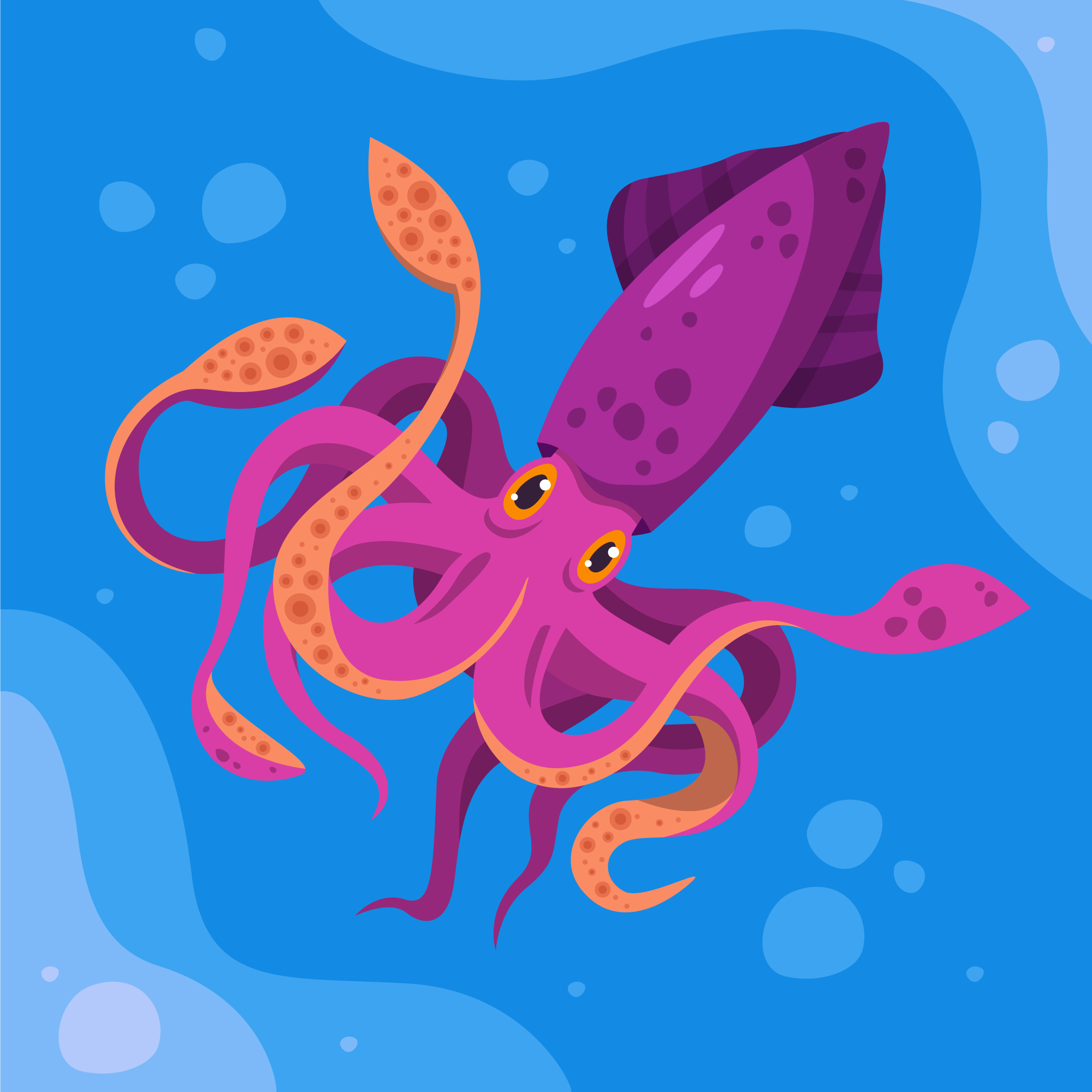
Mollusks Facts for Kids – 5 Magnificent Facts about Mollusks
Table of Contents
Do you know why snails and octopus don’t have backbones? Come and check our five magnificent mollusks facts for kids.
Mollusks Facts for Kids Fact Number 1: Mollusks Are Invertebrates
Mollusks have no backbone or spine. Instead they just have a soft body that holds their organs. Many mollusks have a radula which is a tongue-like organ with teeth on it. Scary enough huh. There are a few different types of Mollusks. Snails and slugs are known as Gastropoda and they are the most diverse group, with thousands of different species.
The majority of snails in this group have a spiral shell, however those without shells are known as slugs. Another type of Mollusk are those in the Bivalvia group. These Mollusks have two shells that open and close, including clams, oysters, and mussels. The third group is known as Cephalopoda. Mollusks in this group only live in saltwater and have no shells, such as squids and octopuses.

Mollusks Facts for Kids Fact Number 2: Some Mollusks Have Shells
Some mollusks have a covering called the mantle to protect their soft skin. Snails have a single mantle which is known as a shell, while other mollusks have two mantles called bivalves. These bivalves can open and close. As we have said already, oysters and clams have bivalves. Mollusk shells can also be very colourful and have dotted or striped patterns.
Look closely at a snail and shell and see what colours and patterns you see. Most mollusks with shells have a foot which allows them to move forward by expanding and contracting muscles. Some bivalves do not move and instead stay attached to rocks. Those that do not have a mantle, such as octopuses and squid can move by forcing water out of a special structure known as a funnel. This acts as a sort of jet propellant.
Mollusks Facts for Kids Fact Number 3: Mollusks Have Different Features for Protecting Themselves
One good thing about carrying your home on your back all the time is that you will always have protection. Many mollusks hide in their shells from predators. But what about those mollusks that do not have a shell to hide in.
Squid and octopuses can change their colour and patterns to blend into their surroundings, this means it is harder for their predators to see them. They can also release a dark black inky liquid to distract and confuse an enemy. How cool is that!
Mollusks Facts for Kids Fact Number 4: Humans Eat Some Mollusks
Many people eat some kinds of mollusk. In France snails are seen as a delicacy. Would you be adventurous enough to try one? More commonly people eat mussels and oysters in restaurants. Not only are some mollusks used for food but some are used for jewellery. The shells of mollusks are often used as a decorative item.
People also take the pearls from oyster shells to wear as jewellery. Pearls are hard luminous objects that are made inside a mollusk. A pearl is created when sand or something similar, gets into the mollusk’s shell, and the mollusk produces a coating to protect itself from the sand. Over time, this coating continues to grow and a pearl is created.

Mollusks Facts for Kids Fact number 5: Mollusks Live on Land and in Water
There are many aquatic mollusks such as octopuses and squid, however there are also many terrestrial mollusks. Snails and slugs can be both aquatic and terrestrial. They love mild and moist climates and that is why you may see them in your home or garden under pots in the shade. You will also find them in vegetable patches eating away at all your lovely lettuces and cabbages.

We hope you enjoyed learning more things about Mollusks as much as we loved teaching you about them. Now that you know how majestic the universe is, you can move on to learn about other living organisms and STEM articles like: Viruses, Cells, Trees, Marshes, Aquatic Plants, Insects, Animals, Palm Trees, Science Branches, Medicine, Patient Animals, Endangered Animals, Polar Animals, Koalas, Land Animals, Sharks, Raccoons, Moon and Sun Bears, Rats, Chickens, Cats, Pandas, Monkeys, endangered animals, waterfowl, Whales, Farm Pets, PH Scale, Chemical Reactions, Atoms, Acids and Bases, Electromagnetic Waves and States of Matter.
Why not subscribe to our LearningMole Library for as little as £1.99 per month to access over 2800 fun educational videos.



Leave a Reply